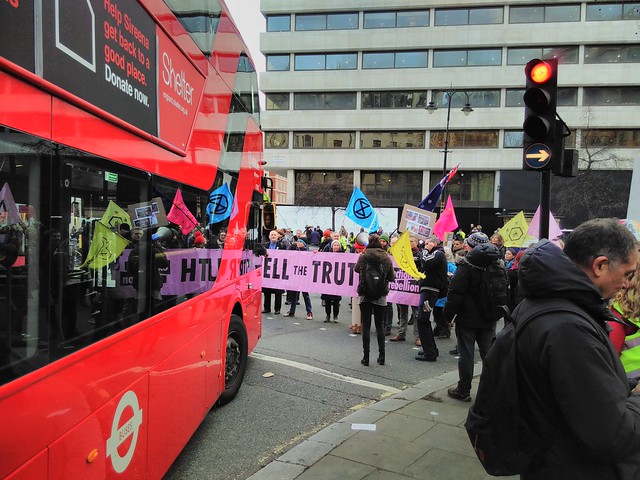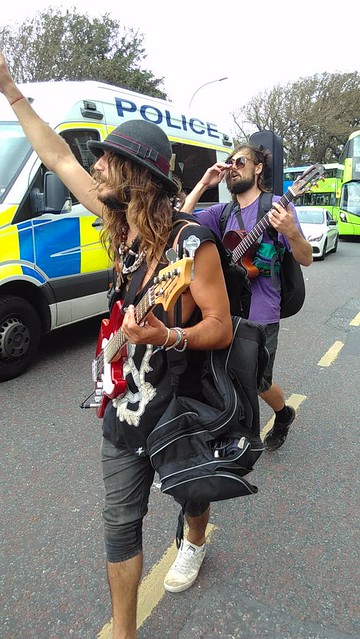The recent London Met police watchlist specifically was worried about the radicalising power of emotive speech. This is because emotive speech works. You can list facts and figures in your speech, and you should, but people act based on how they feel. Conveying a sense of urgency, outrage and hope, simultaneously is the heady mix to build a movement and actually create change, no matter the issue.
Being outside is inherently distracting and you need to keep energy high, so keep the speech short. 3-5 minutes is ideal. You also want to make sure to keep people engaged, so starting with some chanting or call and response is a great way to give people some initial energy. The chants you use at this point should work to build group identity. They can use the name of the organisation (“When I say ‘extinction’, you say ‘rebellion!’”) or be about the general cause that has brought everyone out.
Then you want to state the problem or issue that is the main topic of your speech. Start by setting a scene, go more into details about what the issue is, save the most outrageous parts for last. You want it to start in everyday, accessible language. Keep the emotional level rising throughout the speech. It’s fine to engage the audience between sections. (“Are we going to stand for this??”)
The second major part of your speech, shorter than the first, is making demands. Gradually raise the stakes. It’s fine to make some demands of the crowd, but you need to know the audience and quit while you’re ahead. If you ask a bunch of middle class white climate activists to go vegan, this might be the push that some of them need. If you tell people to quit their jobs and become full time activists, you’ve likely gone too far and undone some of your previous good work.
The largest demands needs to be against the target of the protest or of the state. Again, these need to gradually up the stakes. Start with something everyone aggress with and push so that it’s still entirely reasonable but would require major system change to implement.
For example, “Britain must outlaw the importation and sale of the products of slave labour” is a good starting point. This is an obviously good idea. But carry on with, “British companies must not profit off of slave labour anywhere in the world.” Also extremely reasonable, but much harder to implement. This is what you want. Carry on, “All proceeds any British company, subsidiary, or owner, must have any proceeds of forced labour confiscated. This money must be paid out in restitution to individuals and communities effected by this disgusting practice!” That’s a transitional demand. Because we want to outlaw slavery globally. Apple products made by slave labour shouldn’t be on sale in our shops, but nor should they be on sale anywhere. That this would be hard to implement is good – it shows that the entire system must be overhauled to respect human rights.
Some groups feel that making capitalism a direct and named target is pushing things too far and will lose audiences. I increasingly disagree with this, but use your judgement.
Then make sure to give hope. If you were talking about slavery, you could talk briefly about how Britain sent out it’s navies to free slaves in transport. (True!) Or you can be more generic (“We can change and we will change! We will fight and we will win!”).
End with chanting that is more specifically tied to what you spoke about. (“Climate justice / human rights. One struggle / one fight”)
Performance Practice
Your speech is a performance. Do things you would do to prepare for a performance. You may need to practice speaking into a PA or practice the whole speech. You’ve written something that sitrs emotions, so deliver it with those emotions – be passionate! Stand up straight. Look determined. Take a deep breath. You can do it.
How to talk into a PA
If you are using a bullhorn, hold the microphone close to your mouth. Speak slowly and clearly. If you are using a system with a more normal microphone, hold it part way down. Do not grab it by the business end and especially don’t cover any grill or openings with your hands. Point it at your mouth. As with a bullhorn, speak slowly and clearly. If you get feedback, move behind the speaker and make sure the mic is only pointing at you – not any speakers.


































